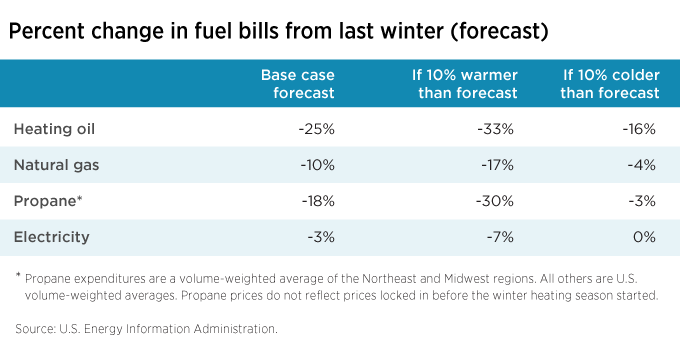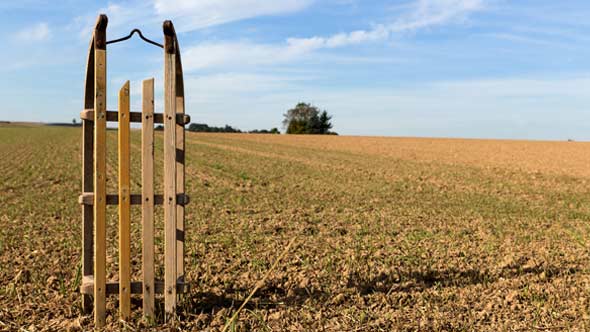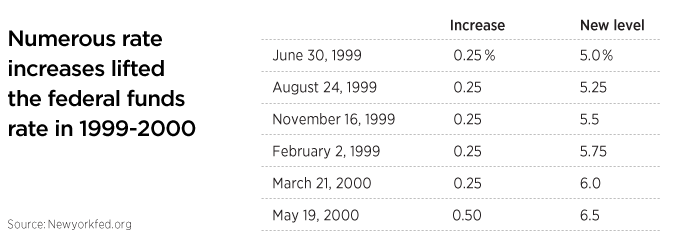With a slump in demand and a glut in supply, energy prices are hitting the lowest levels in more than a decade. Consumers are paying less to fill up their car as well as to heat their homes this winter.
This trend is likely to continue, according to weather and energy experts.
EIA: Expect a warmer winter
Particularly in the Northeast, residents are already experiencing higher-than-normal temperatures for December. The highlights from the latest “winter fuels outlook” from the U.S. Energy Information Administration (EIA) calls for a warmer winter and potential savings of up to 33% over last year on heating oil.
Just recently, the price of crude oil hit a record low below $35 a barrel and natural gas prices fell to a 14-year low on the cheaper crude and mild weather.
Oil prices have fallen by 50% since June 2014. U.S. oil production rose significantly over the past six years, and the growth in global demand has fallen. At the same time, OPEC has refused to cut production.
Consumers recently began paying close to $2.00 per gallon on average for gasoline. That price may go below $2.00 in the coming weeks. The EIA expects consumers to spend $750 less on gas this year because of the price drop.
Weather — not bills — heating up
Based on the latest forecasts from the National Oceanic and Atmospheric Administration (NOAA) temperatures east of the Rocky Mountains are likely to be warmer than last winter— with the Northeast 13% warmer, the Midwest 11% warmer, and the South 8% warmer.

About half of American homeowners use natural gas for heat and could see a 10% decrease in their gas bill this winter over last year,the EIA reported. That estimate could rise to 17% if the weather is 10% warmer than forecast. For propane, declining demand will probably result in an 18% savings for consumers, and 30% less expenditure if the weather warms up further.
Households using electricity for home heating are expected to save about 3% over last year on their bills, and 7% if it gets warmer.
The El Niño effect
Climate experts point to El Niño as the cause for the lower-than-normal warm weather. El Niño is created when the waters in the equatorial region of the Pacific Ocean get significantly warm. This year’s El Niño is among the strongest on record, and is expected to be the strongest in nearly two decades. The El Niño effect is altering the position of the Pacific jet stream, according to NOAA. The weather pattern is expected to produce cooler and wetter weather in the
Southern Plains and southeast, and above-average temperatures in the west and northern half of the United States, NOAA reported.
The winter will not be completely void of cold air snaps and snowstorms. But the frequency and number of storms cannot be predicted. On a positive note, California is likely to see some drought improvement, the report added.
Will first-quarter growth be affected?
Harsh winter weather did a lot of damage to properties and workers’ commutes in the past two winters. In the first quarter of 2015, a series of blizzards and colder-than-normal temperatures even affected U.S. growth. The Bureau of Economic Analysis (BEA) reported that GDP grew only 0.6% in the first quarter due, in part, to the weather conditions.
In 2014, harsh winter weather also had an impact on much of the country. U.S. GDP contracted 2.9% in the first quarter that year. The BEA reported that 19 out of 22 industry groups experienced a drop in economic activity and some of the leading industries were affected by the harsh winter weather. Agriculture, mining, construction, wholesale trade, and business services were among the declining industries.
298621


